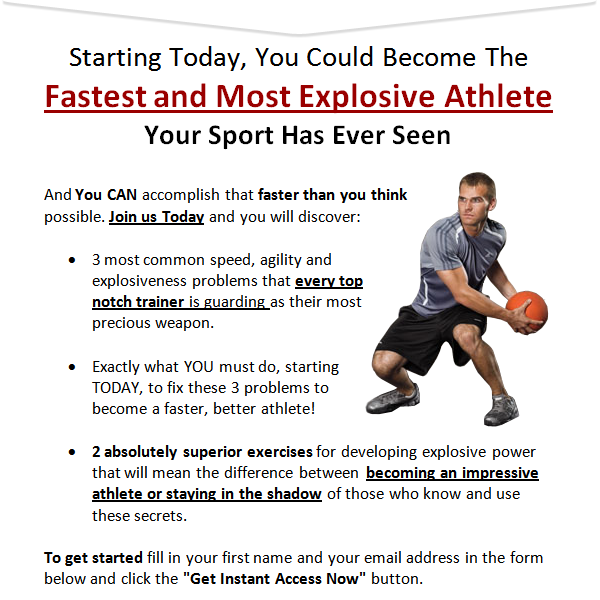Like all ball sports cricket is a ground based rotational sport. Understanding the techniques and the biomechanics behind rotation in these activities is essential before we can go about designing and implementing strength and conditioning programs for athletes that play cricket.
Firstly, I will explain how force is produced during the rotational movements of batsmen, bowlers and fielders. Then we will look at how the body transmits these forces from the ground up to the outer extremities of the body (i.e. the hands) as this is where force is released when hitting, throwing or bowling a ball.
Principles of Rotation
Ground based rotational movements like throwing; bowling and hitting a ball all follow the same sequence. Force is generated in the lower body and transmitted through the torso, into the arms, hand(s), fingers and bat if we are talking about batsmen. If you are interested in a more detailed analysis, have a look at Shaffer, Jobe, Pink and Perry (1993).
4 Fundamental Phases of Rotation
There are 4 fundamental phases of rotation - preparation, drive, impact/release and follow through. We could break these down further but it’s important that we do not overcomplicate things and look too deeply into the mechanics. At the same time though we need to understand them before we can move forward.
Preparation Phase
Bowlers and fielders start in an athletic base position with their weight based on their trail leg (i.e. right leg for right handed throwers and bowlers). However, batsmen are a little more complex in that they are required to play off the front and the back foot. Some batsmen move prior to the ball being delivered (trigger movement) so some might trigger back and across, while others might have a forward press. Whatever the case, batsmen then need to either transfer their weight forward (push off their trail leg onto their lead leg) or back when the batsman needs to play off the back foot where he/she transfers their weight from their lead leg to their trail leg.
In this phase the knee, hips, and shoulders are all perpendicular to the target (i.e. side on). There are some exceptions like the “front on” bowler who will have their trail leg and knee facing straight on towards the target thus producing less rotational force through their body on delivery. It must be noted that most “front on” bowlers are never completely “front on”. Their knee and foot will face between 10 and 30 degrees to the right of the target for a right arm bowler and the opposite for a left arm bowler. A good example of a front on bowler is Courtney Walsh. Have a look at his knee and trail foot on landing (right leg). They both face towards about a third slip if he is bowling to a left handed batsman.
Drive Phase
In this phase there is a shifting of weight from the trail leg onto the front side through extension, abduction, and lateral rotation of the trail hip and simultaneous rotation of the pelvis towards the target. In this phase the shoulders remain somewhat side on or perpendicular to the target. Some athletes may be slightly more turned away than others as we are all different.
Impact or Release Phase
In this phase there is a full extension of the trail hip with plantar flexion of the ankle and simultaneous uncoiling of the torso. In this phase the shoulders, hips and knees should all be aligned to face the target.
The follow through phase is basically a deceleration phase distinguished by the torso rotating around the hip. Core stability and hip range of motion are crucial to efficient deceleration.
Brett Lee showing that core stability and hip range of motion are crucial to efficient deceleration in the follow through. Notice his torso rotating over and around his lead leg- Image by Rhett Blanch
Now that we understand the fundamentals let’s examine each phase of the bat swing, throw or bowl by taking a look at the critical joints in these rotational movements. This will give us a good idea of what we need to work on in our strength sessions.
Foot & Ankle Joint
Range of motion is critical in both the lead and trail ankle. The more mobile we are in our trail ankle, the more force we can apply into the ground for the push off. We also need good range of motion in our lead ankle as restricted mobility will refer force up to the knee and hip. This is particularly important for bowlers and fielders. Studies examining the effect of ankle bracing reveal that restriction of the ankle will lead directly to increased rotation at the knee during landing and trunk turning (Venesky, Docherty, Dapena, & Schrader, 2006; Santos, McIntyre, Foecking, & Liu, 2004).
Hip & Knee Joints
During the drive phase of rotational movements, the hips must be able to dissociate from one another. For fielders, bowlers and other throwing athletes, this allows the trail hip and knee to get full extension, and the lead leg to land with good hip, knee, and ankle alignment with the lead foot pointed towards the target. This “dissociation” relies on a combination of dynamic hip stability and mobility as the torso rotates. This enforces the importance of incorporating hip mobility and stability progressions into our cricket strength and conditioning program. Good hip mobility during the follow through spares the sacroiliac joint and lumbar spine from accepting unnecessary load. A lack of total rotational range of motion of the lead hip has been related to low back pain in professional golfers and recreational athletes who participate in rotation-related sports (Harris-Hayes, Sahrmann, & Van Dillen, 2009; Vad, et al. 2004). This can be applied to fast bowlers and fielders. Often young bowlers get into the gym and build strength without focusing at all on mobility and the results are similar (i.e. lower back pain).
Look at the way in which the torso rotates around the hip when Ricky Ponting follows through over his lead leg when he throws:
Pelvis & Lumbar Spine
The area of the lumbar spine and hip serve as the junction between the upper and lower body. A stable lumbar spine and pelvis provides a safe foundation on which the rest of the joints can operate. This area of the body must remain stable through each phase of the swing, throw or delivery:
• In the preparation phase the legs to be grounded into a stable pelvis in order to exert force into the ground.
• During the drive phase the core transfers ground reaction forces from the legs to the upper body.
• During the follow through phase, a stable core allows joints to work properly and tissues to lengthen or shorten optimally so that the body can decelerate safely. Everything is dependent on core stability. Without it there is no base.
• We need to incorporate anti-rotation drills into the program to train the all four quadrants of the core to stabilize efficiently
The Thoracic Spine
Rotation of the thoracic spine allows for what is generally termed “the X-factor” that we see in elite athletes. If we look at Shoaib Akhtar and Shaun Tait in particular, there is a huge disassociation between their hips and shoulders in their delivery strides. This dissociation creates a stretch around the torso, and the muscles and fascia connecting the contra lateral hip and shoulder (opposite hip and shoulder). The greater the stretch, the greater the reflex action and the greater speed at which the bowler is able to produce with each delivery.
Improving extension of the thoracic spine is critical to optimize rotation and functioning of the trunk muscles. Mobility of the T-spine will reduce stress on the shoulder and lumbar spine during the follow through. Thoracic posture is not only important for rotational movement, but for general performance as poor posture may inhibit optimal breathing and recovery.
Ok now let’s work! It’s time to train! We need to focus on isolated and integrated exercises that will improve mobility, stability, and durability of the joints reviewed above. We can start thinking about designing programs for cricket players and actually teaching proper rotary mechanics. Then we can start building strength and power from a STABLE base.
References
Harris-Haynes, M., Sahrmann, S. A., & Van Dillen, L. R. (2009). Relationship between the hip and low back pain in athletes who participate in rotation-related sports. Journal of Sport Rehabilitation, 18.
McGill, S. (2006) Ultimate back fitness and performance. Backfitpro, Waterloo, Ontario.Santos, M. J., McIntyre, K., Foecking, J., & Liu, W. (2004). The effects of ankle bracing on motion of the knee and hip joint during trunk rotation tasks. Clinical Biomechanics, 19.
Shaffer, B., Jobe, F. W., Pink, M., & Perry, J. (1993). Baseball batting: An electromyography study. Clinical Orthopaedics and Related Research, 292.
Vad, V. B., Bhat, A. L., Basrai, D., Gebeth, A., Aspergren, D. D., & Andrews, J. R.(2004). Low back pain in professional golfers: The role of associated hip and low back range of motion deficits. American Journal of Sports Medicine, 32, 2.
Venesky, K., Docherty, C. L., Dapena, J., & Schrader, J. (2006). Prophylatic ankle braces and knee varus-valgus and internal-external rotation torque. Journal of Athletic Training, 41, 3.





